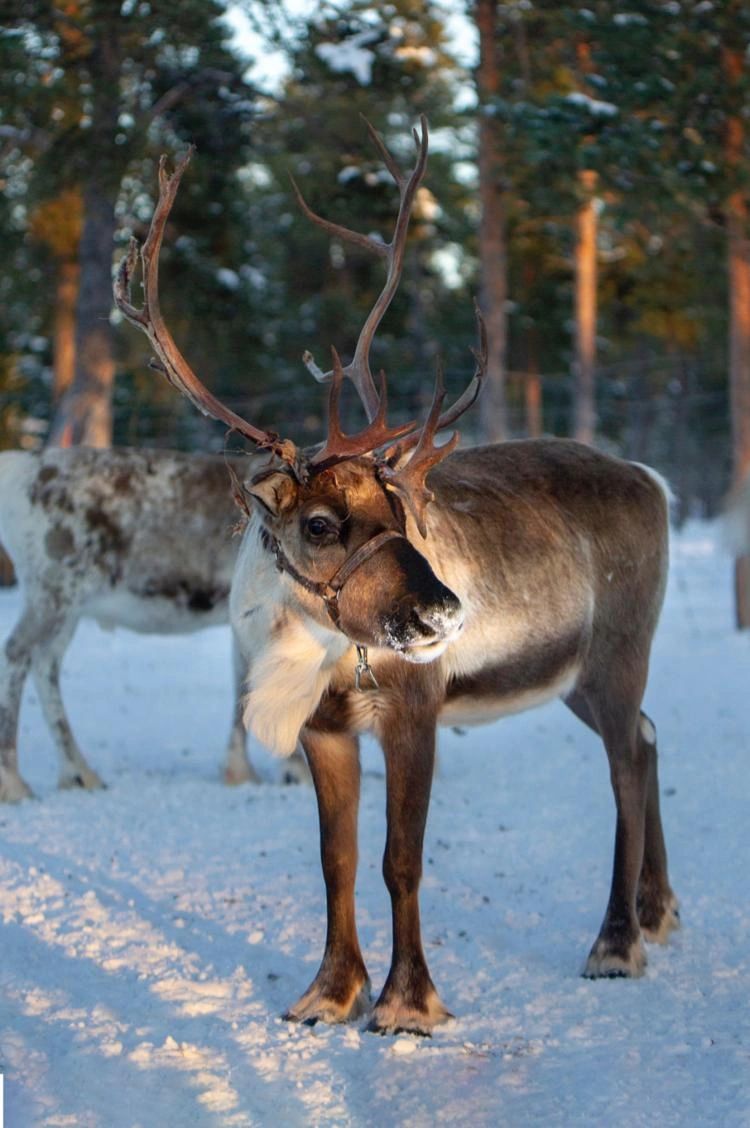
By Cara Giaimo, New York Times, Nov 22, 2019
(Check out #4 for an Island Park shout out!)
Whales, eels, birds and even ladybugs are known for epic migrations that take them hundreds or even thousands of miles through the air and across the sea.
But the land has its fair share of long-distance travelers, too. Recently, an international team of researchers set out to determine which terrestrial mammals migrate the farthest and just how incredible their journeys are. They published a ranking last month in Scientific Reports.
Caribou, those stately ungulates from North America, have “long been credited with the world’s longest migration,” said Kyle Joly, a wildlife biologist with the National Park Service who studies caribou and is the study’s lead author. But for decades, that claim relied on a single paper. “It really hadn’t been validated very robustly,” Joly said.
He decided it was time to double-check — and to “see if there’s another animal out there that might take the crown,” he said. He and his collaborators started asking around for data sets and amassed dozens from across the globe. They measured each distance as the crow flies, from where the animals started to where they ended up, and then back again.
The top finishers illustrate common drivers behind migration as well as contemporary threats to these storied pilgrimages.
5. Tibetan Antelopes
Female Tibetan antelopes travel about 430 miles each year to and from their calving grounds in the Kunlun Mountains.
These Great Dane-sized bovid species with woolly coats edged out more well-known contenders to enter the top five, including the millions of blue wildebeests that travel about 400 miles through the Serengeti as well as Montana’s 270-mile pronghorn migration.
4. Mule Deer
Every summer in the United States, a group of mule deer travel from the Red Desert of Wyoming to Island Park, Idaho.
They have kept up this annual journey, which stretches about 480 miles, although they now must cross two highways. Scientists and other concerned parties are working to minimize man-made interruptions along this and other migration corridors in the West.
3. Gray Wolves
Taking the bronze is a pack of gray wolves in Canada’s Northwest Territories, which migrate about 630 miles in pursuit of their prey, caribou. They’re the only predators that made the list.
Some researchers in the past have theorized that physiological limitations kept predators from stalking their prey year-round. But some groups, like that wolf pack, make a good attempt.
Certain individual predators also seem capable of traveling much farther than average as they pursue steady meals.
The paper put together a second ranking measuring total cumulative distance traveled — the kind of data you would get from a Fitbit fitness-tracking device rather than a flight tracker. A gray wolf from Mongolia came out on top, covering 4,500 miles as it chased khulan, or the Mongolian wild ass, and wild camels during a one-year period.
Other wolves and an arctic fox were also high on that list. Joly said this was a surprising hint that in some cases, “not only can predators keep up, they can actually outpace their prey.”
2. Reindeer
The runners-up among the list of long-haulers are a herd of reindeer from the Taimyr Peninsula in Russia, which traveled nearly 750 miles per year.
They may not hold this place for long. In recent years, swarms of mosquitoes, incubated by warming temperatures, have driven many of the reindeer away from their regular route. The population has also been decimated by poaching.
As Joly is quick to point out, similar situations have befallen impressive trekkers across the world. This, combined with a lack of data from a number of areas, makes it difficult to have full confidence in any list, even one compiled from so many sources.
More complications come from the type of distance measured. David Wilcove, an ecologist at Princeton, praised the study but said he would like to see a ranking based on more precise measurements of the migrators’ routes.
1. Caribou
For the moment, caribou stayed on top. In fact, if you were to rank by groups of animals, rather than species, populations of caribou would take all five top spots.
The Bathurst Herd, from the Northwest Territories, and the Porcupine Herd, from Alaska and the Yukon Territory, are the elites of the elites — each has been tracked traveling about 840 miles. That’s like walking from Washington, D.C., to Tallahassee, Florida.
Joly, who spends a lot of time watching pings from caribou GPS collars moving across a digital map, was pleased but not too surprised.
“I was fairly confident,” he said.

